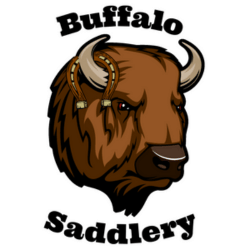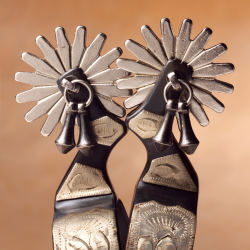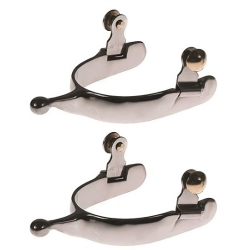When it comes to horse riding, the safety and comfort of both the rider and the horse are of utmost importance. That's why proper equipment and tack play a crucial role in ensuring a smooth and enjoyable ride. One essential piece of tack that every equestrian should be familiar with is the breast collar for horses.
In this blog post, we will delve into the world of horse tack and explore the purpose and significance of a breast collar. We will take a closer look at its anatomy, the different types available, and why it is essential to use one when riding. Additionally, we will discuss the proper fitting techniques and common mistakes to avoid, as well as tips for maintaining and caring for a horse's breast collar.
Whether you are a seasoned rider or new to the equestrian world, understanding the function and importance of a breast collar is essential for the well-being and performance of both you and your horse. So, let's dive in and discover everything you need to know about this vital piece of horse equipment.
Introduction: The Basic Concepts of Horse Tack
Horse tack refers to the equipment and accessories used in horse riding and handling. It encompasses a wide range of items designed to ensure the safety, comfort, and control of the horse during various activities such as riding, driving, or working. Understanding the basic concepts of horse tack is essential for any equestrian enthusiast.
Tack serves multiple purposes, including providing support, maintaining control, and protecting both the horse and the rider. It is important to note that different disciplines and riding styles may require specific types of tack. However, there are some fundamental pieces of horse tack that are commonly used across various equestrian disciplines.
Some of the essential horse tack items include:
-
Saddle: A saddle is a supportive structure placed on the horse's back to distribute the rider's weight and provide a comfortable seat. There are different types of saddles, such as English, Western, and endurance saddles, each designed for specific riding styles.
-
Bridle: A bridle is a set of reins, bit, and headstall that is used to control and communicate with the horse. It is placed on the horse's head and includes various components like the bit (mouthpiece), reins (used for steering and stopping), and headstall (straps to secure the bridle on the horse's head).
-
Girth: A girth, also known as a cinch, is a strap or band that secures the saddle on the horse's belly. It ensures that the saddle remains in place during riding and prevents it from sliding or shifting.
-
Stirrups: Stirrups are foot supports attached to the saddle, providing stability and balance for the rider. They allow the rider to maintain a secure position and aid in mounting and dismounting.
-
Breast Collar: A breast collar, our main focus in this blog post, is a piece of tack that is placed around the horse's chest and shoulders. It plays a significant role in providing stability to the saddle and distributing the weight of the load more evenly.
Understanding these fundamental concepts of horse tack sets the stage for diving deeper into the specific purpose and importance of a breast collar for horses. By comprehending the basics, you will gain a better understanding of how each piece of tack contributes to the overall safety and comfort of both the horse and the rider.
What is a Breast Collar for Horses
A breast collar, also known as a breastplate or breastplate collar, is a piece of horse tack that is designed to secure the saddle and prevent it from sliding backward during riding or other activities. It is typically made of leather, nylon, or a combination of materials and is placed around the horse's chest and shoulders.
The anatomy of a horse's breast collar consists of several components that work together to provide support and stability. These components include:
-
Collar Strap: The collar strap is the central part of the breast collar that goes around the horse's chest. It is adjustable and is usually made of leather or sturdy nylon material.
-
Shoulder Straps: Attached to the collar strap, the shoulder straps extend from the collar and loop around the horse's shoulders. These straps help to distribute the pressure evenly and provide additional stability.
-
Attachments: Breast collars often have attachments, such as rings or D-rings, located on the collar or shoulder straps. These attachments can be used to connect other pieces of equipment, such as reins or martingales, depending on the specific riding discipline or training needs.
Different types of breast collars are available, each designed to suit specific riding styles and purposes. Let's explore some of the most common types:
-
Pulling Collar: A pulling collar is primarily used in work or draft horses to secure the harness and distribute the load during pulling activities. It is typically wider and heavier than other types of breast collars.
-
Western Breast Collar: Popular in Western riding, the Western breast collar is designed to secure the saddle and prevent it from sliding during activities like roping or cutting. It often features decorative tooling and may have additional attachments for tying ropes or carrying equipment.
-
English Breastplate: Commonly used in English riding disciplines such as eventing or show jumping, the English breastplate is usually lighter and more streamlined compared to Western styles. It provides stability to the saddle and helps prevent it from slipping backward during jumps or fast-paced movements.
Understanding the different types and components of a breast collar is essential in selecting the right one for your specific riding needs. In the next section, we will explore the reasons why using a breast collar is important for both the horse and the rider.
Why Use a Breast Collar
Using a breast collar for horses serves several important purposes. It not only enhances the safety and comfort of both the horse and the rider but also contributes to the overall performance and well-being of the horse. Let's explore the reasons why using a breast collar is crucial in horse riding:
The Importance of a Breast Collar
-
Stability and Security: A breast collar provides stability to the saddle by preventing it from sliding backward during riding or other activities. This is particularly beneficial when riding on steep or uneven terrain, performing quick maneuvers, or participating in disciplines that involve sudden stops and turns.
-
Weight Distribution: The breast collar helps distribute the weight of the load or rider more evenly across the horse's shoulders and chest. By doing so, it reduces the pressure on the horse's back and spine, minimizing the risk of discomfort, soreness, or potential injuries.
-
Enhanced Control: When properly fitted, a breast collar can improve the rider's control over the horse. It helps keep the saddle in place, allowing for better communication between the rider's aids and the horse's movements. This increased control is especially valuable in disciplines that require precise movements, such as dressage or reining.
-
Prevents Saddle Slippage: One of the main reasons for using a breast collar is to prevent the saddle from slipping backward. This is particularly important when riding in challenging terrains or engaging in activities that involve sudden bursts of speed. A secure saddle ensures the rider's stability and reduces the risk of accidents or falls.
How Does a Breast Collar Improve Horse Performance?
-
Freedom of Shoulder Movement: A well-fitted breast collar allows the horse's shoulders to move freely without restriction. This unrestricted movement is essential for the horse's balance, flexibility, and overall performance, particularly in disciplines that require extended strides or jumping.
-
Reduced Muscle Fatigue: By distributing the weight of the load more evenly, a breast collar helps reduce muscle fatigue in the horse's back and neck. This allows the horse to perform for longer periods without experiencing excessive strain or discomfort.
-
Increased Endurance: The enhanced stability and weight distribution provided by a breast collar can contribute to the horse's endurance. By minimizing fatigue and discomfort, the horse can maintain its performance level for extended periods, making it ideal for endurance rides or long trail rides.
-
Injury Prevention: A properly fitted breast collar can help prevent injuries by reducing the risk of saddle slippage or the saddle shifting to one side. This is especially important when engaging in activities that involve sudden movements or high-speed actions.
Understanding the importance of using a breast collar and the benefits it provides to both the horse and the rider emphasizes its significance as a valuable piece of horse tack. In the next section, we will delve into the proper techniques for fitting a breast collar on a horse to ensure optimal comfort and functionality.
How to Properly Fit a Breast Collar on a Horse
Properly fitting a breast collar on a horse is crucial to ensure its effectiveness, comfort, and safety. Here, we will discuss the step-by-step process of fitting a breast collar, along with common mistakes to avoid:
Steps in Fitting a Breast Collar
-
Measure the Horse: Begin by measuring the horse's chest circumference. Use a soft measuring tape and wrap it snugly around the widest part of the horse's chest, just behind the horse's front legs. Note down the measurement for reference.
-
Choose the Right Size: Select a breast collar that matches the measured chest circumference of the horse. It should fit comfortably without being too tight or too loose. Refer to the manufacturer's sizing guidelines if available.
-
Prepare the Horse: Before fitting the breast collar, ensure that the horse is calm and properly groomed. Remove any dirt, debris, or excess hair from the chest area to prevent discomfort or rubbing.
-
Adjust the Collar Strap: Begin by adjusting the collar strap to the appropriate length. Fasten it securely but not too tightly around the horse's chest, ensuring that it sits just above the point of the shoulder. It should allow enough room for the horse to move freely without causing any restriction.
-
Attach the Shoulder Straps: After adjusting the collar strap, attach the shoulder straps to the saddle. They should loop around the horse's shoulders and connect to the saddle's D-rings or other designated attachment points. Make sure the straps are adjusted evenly on both sides for proper balance and fit.
-
Check for Proper Positioning: Once the breast collar is attached, check for proper positioning. It should sit snugly against the horse's chest and shoulders without causing any discomfort or rubbing. Ensure that it does not restrict the horse's movement or interfere with the natural motion of the shoulder.
Common Mistakes in Fitting a Breast Collar
-
Incorrect Length: One common mistake is fitting the breast collar either too tight or too loose. A tight collar can restrict the horse's movement and cause discomfort, while a loose collar may not provide the necessary stability. Ensure a proper fit by measuring the horse accurately and selecting the appropriate size.
-
Uneven Adjustments: Failing to adjust the shoulder straps evenly on both sides can result in an imbalanced fit. This can cause the saddle to shift to one side, leading to discomfort and potential injuries. Take the time to ensure that both shoulder straps are adjusted evenly for proper alignment.
-
Improper Positioning: Placing the breast collar too high or too low on the horse's chest can lead to discomfort and rubbing. It should sit just above the point of the shoulder, allowing for free movement without interfering with the horse's natural motion.
By following these fitting guidelines and avoiding common mistakes, you can ensure that the breast collar is properly fitted to your horse, providing optimal support, stability, and comfort during riding activities. In the next section, we will explore essential tips for maintaining and caring for a horse's breast collar to ensure its longevity and functionality.
Maintaining and Caring for a Horse's Breast Collar
Maintaining and caring for a horse's breast collar is essential to ensure its longevity, functionality, and the comfort of your horse. Here are some important tips for properly maintaining and caring for a horse's breast collar:
Regular Cleaning and Inspection
-
Remove Dirt and Debris: After each ride, remove any dirt, dust, or debris from the breast collar using a soft brush or cloth. Pay attention to the areas where the collar comes into contact with the horse's skin or coat, as these are more prone to accumulating sweat, dirt, or grime.
-
Clean with Mild Soap: Periodically clean the breast collar using a mild soap or leather cleaner specifically designed for horse tack. Follow the manufacturer's instructions and use a soft cloth or sponge to gently wipe down the entire collar, removing any dirt or stains. Rinse off the soap residue and allow it to air dry thoroughly.
-
Condition the Leather: If the breast collar is made of leather, it is important to keep it supple and prevent cracking. Apply a leather conditioner or oil to keep the leather moisturized and maintain its quality. Follow the manufacturer's instructions for the appropriate type and frequency of conditioning.
-
Check for Damage or Wear: Regularly inspect the breast collar for any signs of damage, such as frayed stitching, loose buckles, or worn-out straps. Pay attention to areas that experience more pressure or rubbing, such as the collar strap and attachment points. Address any repairs or replacements promptly to avoid compromising the collar's functionality.
Tips for a Long-Lasting Breast Collar
-
Proper Storage: When not in use, store the breast collar in a clean and dry place, away from direct sunlight or extreme temperatures. Consider using a bridle or tack bag to protect it from dust, moisture, or potential damage.
-
Avoid Excessive Moisture: Exposure to excessive moisture can damage the leather or cause mold and mildew to develop. Avoid leaving the breast collar in damp conditions or allowing it to get soaked. If it does get wet, wipe it dry with a clean cloth and allow it to air dry completely before storing.
-
Avoid Harsh Chemicals: When cleaning or conditioning the breast collar, avoid using harsh chemicals or household cleaners, as they can damage the leather or cause discoloration. Stick to products specifically formulated for horse tack.
-
Regular Inspections: Periodically check the breast collar for signs of wear and tear, such as stretched straps, loose stitching, or worn-out hardware. Regular inspections allow you to identify any potential issues early on and address them promptly.
By following these maintenance and care tips, you can prolong the lifespan of your horse's breast collar, ensure its functionality, and provide maximum comfort for your horse during rides. Proper care and attention will contribute to the overall safety and performance of both you and your horse.












































